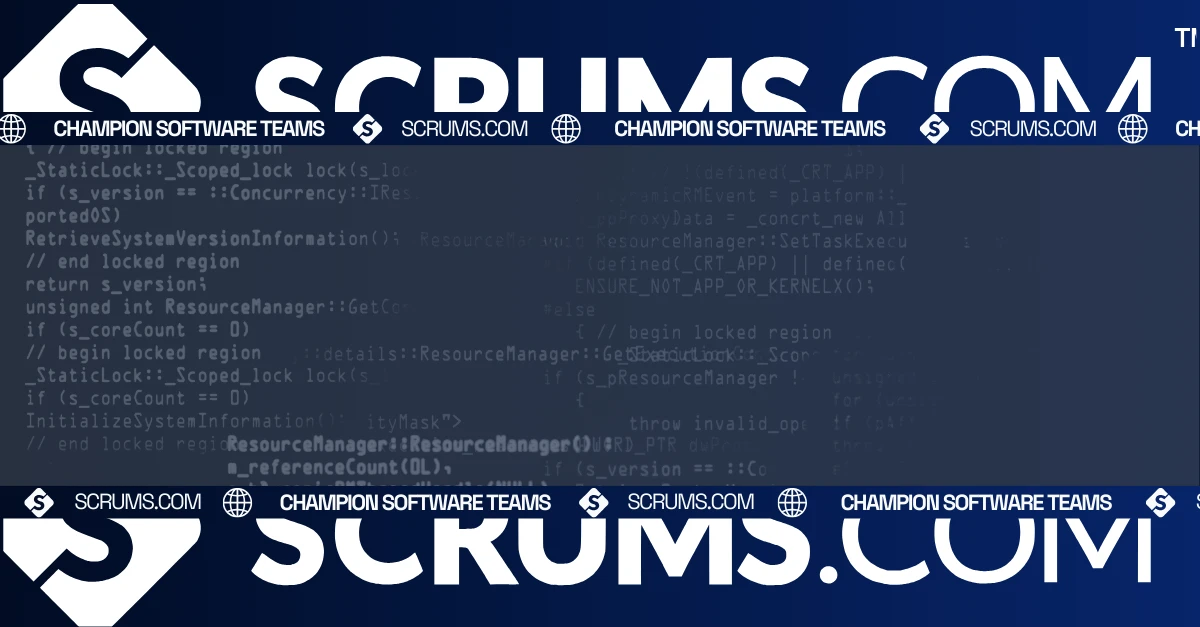Bootstrap: Powerful Frontend Framework for Web Design
Introduction to Bootstrap
Bootstrap is a popular open-source CSS framework that helps developers build responsive, mobile-first websites quickly and efficiently. It is a go-to tool for software development companies, web designers, and developers aiming to create consistent and visually appealing web interfaces. For business owners and CTOs, Bootstrap provides a reliable foundation to develop web projects that are not only visually appealing but also optimized for different devices and screen sizes, ensuring a great user experience.
What is Bootstrap?
Bootstrap, originally developed by Twitter in 2011, is a free, open-source front-end framework consisting of HTML, CSS, and JavaScript components. The primary goal of Bootstrap is to simplify the development of web pages by offering pre-designed components and a responsive grid system. It solves the problem of cross-browser compatibility and provides a unified design system that accelerates development time.
Bootstrap is particularly effective in projects where time-to-market is crucial, such as launching a new product, creating marketing websites, or quickly prototyping web applications. It is also widely used in enterprise web development for its ease of use and extensive documentation.
Core Features and Functionalities
Responsive Grid System: Bootstrap's grid system allows developers to create complex layouts that adjust dynamically across different screen sizes, ensuring optimal display on desktops, tablets, and mobile devices.
Pre-designed Components: Offers a variety of ready-to-use components such as buttons, forms, navigation bars, modals, and carousels that are easily customizable to match the design requirements.
Extensive CSS and JavaScript Utilities: Provides a library of utility classes for easy styling and JavaScript components like modals, tooltips, popovers, and carousels, enhancing interactivity without needing custom code.
Customizable via SASS Variables: Allows developers to customize Bootstrap by modifying SASS variables, making it easy to create a unique design system while maintaining the benefits of Bootstrap's core.
Cross-Browser Compatibility: Ensures consistent design and behavior across major browsers, reducing the time spent fixing cross-browser issues.
Support for JavaScript Frameworks: Seamlessly integrates with popular JavaScript frameworks such as React (React Bootstrap), Angular, and Vue, allowing developers to use Bootstrap's components within modern JavaScript ecosystems.
Extensive Documentation and Community Support: Comprehensive documentation and a large community of developers provide extensive support and resources for learning and troubleshooting.
Benefits for Businesses and Development Teams
For Businesses:
Bootstrap accelerates the development process, reducing time and costs associated with web design and development. It enables rapid prototyping and faster iterations, helping businesses bring their products to market more quickly. Bootstrap's responsive design capabilities ensure websites are optimized for all devices, which is essential for reaching a broader audience and enhancing user engagement.
For Developers:
Bootstrap provides a robust toolkit that simplifies front-end development, allowing developers to focus on functionality rather than design details. Its grid system, reusable components, and extensive documentation make it easier to build and maintain complex web applications. Developers benefit from Bootstrap's integration with various JavaScript frameworks, enhancing productivity and flexibility.
Use Cases and Applications
Bootstrap is widely used across various industries and web development scenarios:
Responsive Website Development: Perfect for developing websites that need to be responsive and accessible across all devices, ensuring consistent user experiences.
Rapid Prototyping: Enables developers and designers to quickly prototype web applications and get feedback without starting from scratch.
Industry-Specific Applications:
- Fintech: Ideal for creating user-friendly dashboards, data visualization tools, and secure web portals that adapt seamlessly to different devices.
- Healthcare: Supports the development of responsive patient management systems, telehealth platforms, and healthcare provider portals.
- Ecommerce: Helps build responsive and attractive ecommerce platforms that provide a consistent user experience across mobile, tablet, and desktop devices.
Integration Capabilities and Ecosystem
Bootstrap integrates seamlessly with various development tools, libraries, and platforms:
JavaScript Frameworks: React Bootstrap, Angular UI Bootstrap, and Vue Bootstrap are popular integrations for developers using JavaScript frameworks.
Content Management Systems (CMS): Works well with popular CMS platforms like WordPress, Joomla, and Drupal, allowing developers to create custom themes and designs.
Build Tools: Compatible with modern build tools like Webpack, Gulp, and Grunt for optimizing assets and managing dependencies.
APIs and Plugins: Offers a variety of plugins and extensions that enhance the default Bootstrap functionality, providing additional customization options.
Hosting Platforms: Easily deployable on hosting platforms like AWS, Azure, Netlify, and Vercel for scalable and secure web hosting.
Comparison with Alternatives
Bootstrap competes with frameworks like Foundation, Bulma, and Tailwind CSS:
Pros: Extensive component library, robust grid system, strong community support, and comprehensive documentation.
Cons: Larger file size compared to some alternatives, leading to potential performance issues if not optimized.
Cost Considerations: Bootstrap is open-source and free to use, making it a cost-effective choice for businesses and developers.
Key Differentiators: Bootstrap's ease of use, extensive pre-built components, and strong integration with JavaScript frameworks make it a popular choice for rapid web development.
When to Choose Bootstrap
Opt for Bootstrap if you need a reliable, easy-to-use framework for building responsive, mobile-first websites or web applications. It is particularly well-suited for teams looking for rapid prototyping, consistent design, and cross-browser compatibility without the need for extensive custom CSS.
Getting Started with Bootstrap
To get started with Bootstrap:
- Include Bootstrap in Your Project: Add Bootstrap via a CDN or download the source files and include them in your project.
- Understand the Grid System: Learn to use Bootstrap’s grid system to create responsive layouts that adjust to different screen sizes.
- Use Pre-built Components: Implement pre-designed components such as buttons, navbars, and modals to speed up development.
- Customize Using SASS: Modify Bootstrap’s SASS variables to customize styles and create a unique look and feel.
- Integrate with JavaScript Frameworks: Use React Bootstrap, Angular UI Bootstrap, or other libraries to integrate Bootstrap seamlessly into your preferred framework.
For more detailed guidance, explore Bootstrap documentation.
Related Tools and Resources
Guide to Responsive Web Design with Bootstrap
Explore Related Software Development Tools
FAQs
We've got you covered, these are some common questions we receive. Not seeing the answer to something?...
Bootstrap is a CSS framework, while React Bootstrap is a library that integrates Bootstrap components into the React framework.
Yes, Bootstrap is scalable and is used by many large-scale websites and applications for its responsive design capabilities.
Yes, Bootstrap is highly customizable through SASS variables, allowing developers to modify its default styles to suit their needs.
Bootstrap is designed to work consistently across all major browsers, reducing the time developers spend on cross-browser testing.
Yes, Bootstrap is an open-source framework available for free with extensive community support and resources.
Bootstrap’s pre-built components, responsive grid system, and extensive documentation allow developers to build and deploy websites faster.
Explore Software Development Blogs
The most recent trends and insights to expand your software development knowledge.






